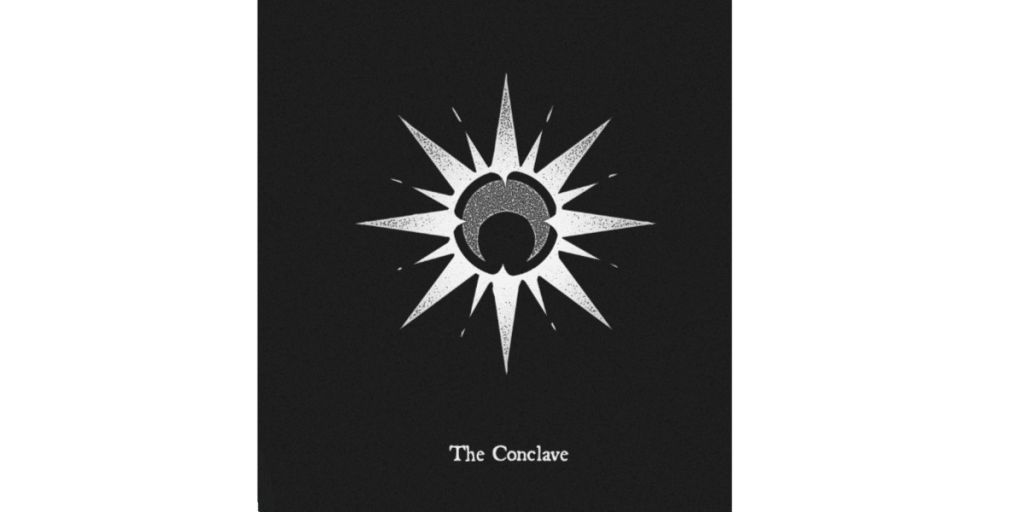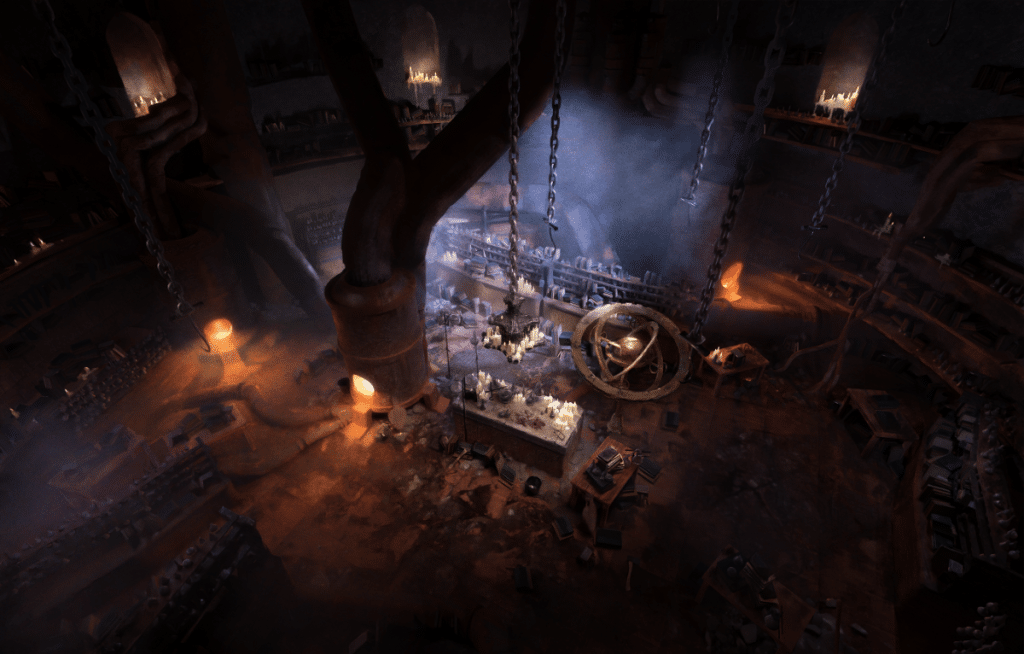Nothing is meaningless.
The Conclave is older than Hollows. In fact, it’s older than most institutions that persist in The Isles, but the fact that it specifically predates the first known Hollow is significant. It’s almost as if their long-irrelevant royal founder was prescient when she formally acknowledged The Isles’ disparate circles of sages and occults as a single force. Not that the Conclave are especially known for their unity and strength of purpose: they’re fractious and petty, riven with competing interests and theories and preoccupied with secrets.
The Conclave thrives on obscuring information. It keeps secrets from the populace for their own good, and from its own members in pursuit of power and status. Conclave members learn to be both reclusive and selfish, and these tendencies have ensured it’s incredibly difficult to pursue any occult education in The Isles. Only one in six Conclave members can truly profess any mastery of the arcane arts; the rest are frauds, shysters, dilettantes, or (worse) theorists.
Make no mistake: if the Conclave isn’t obliterated in the pursuit of forbidden knowledge, it will continue to devour itself until there’s nothing left. Its crusade against Hollows is its last gasp.

Conclave Origins
In Hollows, Conclave characters have one of four Origins:
Crucible members are mystics, hailing from the Temple Malignatus – a secret order within a secret order who study and glorify the Grand Malignancies. They’re viewed with suspicion by other branches of the Conclave. They scheme and posture, jostling one another for position in their tiny, hierarchical sub-order, and they excel at it. Perhaps it’s just as well: if they turned their attention outward, their studies might bear dangerous fruit.
Knight-Alchemists are both warriors and scholars, celebrants of the ancient tradition of transmuting a worthy foe into a slaughtered prize. They’re hunters – small h – and knights errant, ever questing after some new trophy. Usually that’s figurative: a new horizon to explore and tame, or a new shard of knowledge to treasure. Knight-Alchemists are charming, enthusiastic, and superb at breaking things down into their component parts.
Geophrenologists are the Conclave’s internal opposition. The Conclave’s prevailing theory is that Hollows arise from an individual’s trauma. Geophrenologists know that’s not so. People are merely inconvenient obstacles that thwart the natural flow of energy, giving rise to the blockages known as Hollows. Remove the occlusion and nature will surely restore itself. Geophrenologists excel at reading their surroundings, interrogating written and oral information sources, and standing firm in the face of dissent or opposition.
Test Subjects are wretches and aberrations. They’re the lowest creatures in the Conclave:, not scholars, but the objects of study. They’re experiments who’ve lived long enough to be repurposed. Many of them are quite powerful; all are significantly changed by the knives and spells of the Conclave. They’ve given up everything – the Hunt is all they have now.
Conclave Seeds
The longer a person stays in the Conclave and the higher they climb in its serpentine power structure, the more parts of their lives are cut away and sacrificed in the name of advancement.
Adrift members of the Conclave gave up something irreplaceable for their position. They let go of their families, their loved ones, their wealth, or their happiness for the Conclave, and it tore them open and let a Malignancy creep in to fill the void. Some who are Adrift still believe it was worth it; others never had a choice to start with.
Cursed individuals are, arguably, suffering from an undesirable gain rather than a loss, but it certainly feels like losing – their health, their freedom, or their peace of mind, for example. They’re damned by the work of another occultist, a monster, or a stain on their soul born of their own foul rituals. In fact, they’re doubly damned, because the curse they suffered – or whatever they did to earn it – made their Seed ripen and bear fruit.
Obliviated members of the Conclave are excommunicates. They’re the Conclave members who threw caution, propriety, and self-preservation to the wind and immersed themselves in activities even the Conclave deemed taboo – cannibalism as a form of sympathetic magic, or service to a Malignancy. Then there are the Crimson Players, who committed the worst crime of all: suppressing and destroying arcane knowledge.
Hollow-Born persons came into existence inside a Hollow. They’ve been ripped out of it now, rescued by some enterprising Hunter or escaping under their own power, but where a human history and identity should be, there’s just a void. Hollow-Born don’t have lives to go back to between Hunts, just nightmares of the Grand Malignancies, the hell they once called home, or the Hunters who slaughtered everyone they once knew.
The Conclave and Hollows
The Conclave doesn’t want to rid The Isles of Hollows – at least, that’s not all they want. Before they disinfect and stitch these lesions on the skin of reality, they want to study them. There are secrets inside Hollows, and every secret is a key to power.
It follows, then, that Conclave Hunters usually have goals inside a Hollow beyond closing it. They enter with questions – what is a Hollow made of? What is a Weapon? Could a person’s Seed be deliberately made to bloom? – and strive to leave with answers. It’s both their right to do so and their nature; what use is anything, if it’s not studied, understood, and bent to serve a purpose?
Closing a Hollow is usually a necessary concession. For one thing, it’s the easiest way to leave one. What to do with its Lord is a more nuanced question. Having a redeemed Lord of the Hollow skulking around the Refuge is unquestionably risky… but it’s so terribly valuable.


Comments
There are no comments yet.